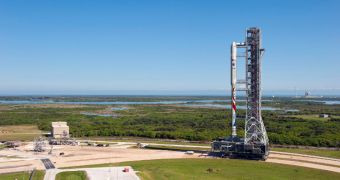When the American space agency awarded its first round of Commercial Crew Integrated Capability (CCiCap) contracts earlier this year, it snubbed long-term contractor Alliant Techsystems (ATK) and its Liberty program, in favor of other companies. Officials now explain why.
According to associate administrators of the NASA Human Exploration and Operations Mission Directorate, in Washington DC, the whole issue boiled down to technical concerns that the agency had.
William Gerstenmaier says that ATK approached some of the technical issues associated with its project from a perspective that did not bode well at NASA. As a result, the company and three other less-renowned firms were overlooked in favor of other corporations.
The CCiCap contracts awarded by NASA a couple of months ago are worth $1.1 billion. The main beneficiaries are Hawthorne, California-based Space Exploration Technologies Corporation (SpaceX), Sierra Nevada Space Systems and the Boeing Company.
ATK proposed an approach where the Liberty rocket – a collage of American and European components – would carry a spacecraft currently being developed by Denver, Colorado-based Lockheed Martin Space Systems.
The overall design of the capsule is based on a concept that was previously studied by engineers at the NASA Langley Research Center (LRC), in Hampton, Virginia. Experts at ATK are convinced that they can make the vehicle work, Space reports.
The Liberty rocket has a core stage derived from the one used on the space shuttles (for which the company was a major contractor) and an upper stage taken from an Arianespace Ariane V rocket.
“I had some significant concerns about the lack of detail in some areas of ATK’s technical approach,” Gerstenmaier says.
“Basically, the proposal lacked enough detail to determine if a safe crew transportation system could be developed in a timely and cost effective manner out of the heritage components ATK selected for this concept,” he adds.
Most likely, the company will continue to develop its spacecraft further, and apply for a new funding contract with NASA at a later date.

 14 DAY TRIAL //
14 DAY TRIAL //